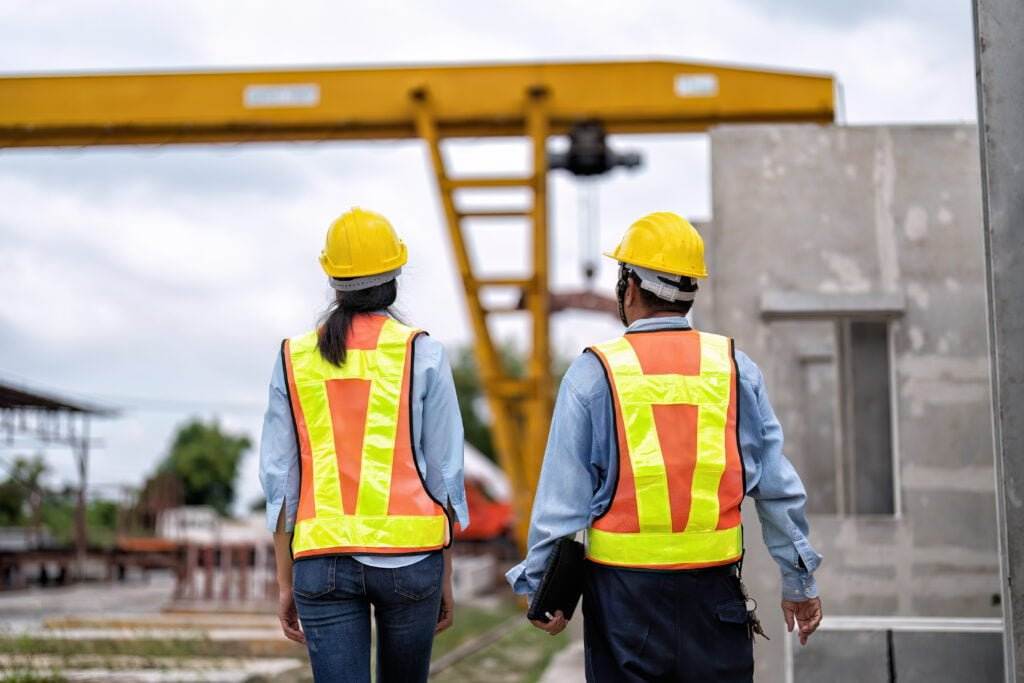Introduction
Overhead cranes are a critical component in various industries, including construction, manufacturing, and transportation. They are used to lift and move heavy objects in a safe and efficient manner. However, they can also be dangerous if not used properly. Three Sixty Safety knows how important it is and is here to help your team to follow safety regulations and standards, conduct regular inspections and maintenance, and provide direction on appropriate personal protective equipment (PPE) to prevent accidents. This comprehensive overview will provide information on essential components of overhead cranes, safety regulations and standards, inspections and maintenance, common causes of overhead crane accidents, and frequently asked questions.
Types of Overhead Cranes
There are various types of overhead cranes, including bridge cranes, gantry cranes, and jib cranes. Each type has unique features and is designed for specific purposes. For example, bridge cranes are commonly used in manufacturing facilities to lift and move heavy materials, while gantry cranes are often used in construction sites for heavy-duty lifting. Jib cranes, on the other hand, are ideal for smaller work areas and are often used for precision lifting.
Safety Regulations and Standards
The Occupational Safety and Health Administration (OSHA) sets safety regulations and standards for overhead cranes to ensure safe operation. Employers are required to follow these regulations and standards, which include training requirements for operators, regular inspections and maintenance, and proper use of PPE. Some of these regulations include:
- Operator training: OSHA requires that all overhead crane operators be trained and certified before operating a crane. The training must cover topics such as crane operation, load capacity, inspection and maintenance, and safety procedures.
- Inspections: OSHA requires that overhead cranes be inspected regularly to ensure that they are in good working condition. The frequency of inspections depends on the type of crane and how often it is used, but they should be done at least annually.
- Load capacity: OSHA sets limits on the maximum load capacity of overhead cranes based on factors such as the type of crane, the angle of the hoist, and the weight of the load being lifted.
- Personal protective equipment (PPE): OSHA requires that all personnel involved in overhead crane operations wear appropriate PPE, which may include hard hats, safety glasses, gloves, and steel-toed shoes.
- Overhead crane safety devices: OSHA requires that overhead cranes be equipped with certain safety devices, such as limit switches and overload protection, to prevent accidents and injuries.
Adhering to these safety regulations can help ensure the safe operation of overhead cranes in the workplace.
Essential Components of Overhead Cranes
Overhead cranes consist of various essential components, including the hoist, trolley, bridge, runway, and controls. Each component plays a critical role in the safe operation of the crane. For example, the hoist is responsible for lifting and lowering the load, while the controls are used to direct the movement of the crane.
Inspections and Maintenance
Regular inspections and maintenance are crucial for the safe operation of overhead cranes. OSHA requires that employers conduct frequent inspections and keep detailed records of the inspections. The inspections should include checks of the hoist, trolley, bridge, runway, and controls, as well as the electrical systems, brakes, and safety devices.
Personal Protective Equipment (PPE)
PPE is essential for protecting overhead crane operators and workers in the surrounding area from hazards such as falling objects and electrical shock. OSHA requires that employers provide appropriate PPE, including hard hats, gloves, eye protection, and electrical hazard protection.
Common Causes of
Overhead Crane Accidents
Overhead crane accidents can occur due to a variety of reasons, including operator error, equipment malfunction, and improper maintenance. According to OSHA, the most common causes of overhead crane accidents include:
- Operator error, such as improper use of controls or exceeding the load capacity
- Equipment malfunction, such as worn-out brakes or faulty electrical systems
- Improper maintenance, such as failure to conduct regular inspections and replace worn out parts
FAQ's
Frequently Asked Questions
- What are some common safety hazards associated with overhead cranes? Some common safety hazards associated with overhead cranes include improper use of the crane, overloading the crane, improper maintenance and inspection, and failure to use appropriate personal protective equipment.
- What kind of training is required for overhead crane operators? OSHA requires that all overhead crane operators be trained and certified before operating a crane. The training must cover topics such as crane operation, load capacity, inspection and maintenance, and safety procedures.
- How often should overhead cranes be inspected? OSHA requires that overhead cranes be inspected regularly to ensure that they are in good working condition. The frequency of inspections depends on the type of crane and how often it is used, but they should be done at least annually.
- What kind of personal protective equipment (PPE) is required for overhead crane operations? OSHA requires that all personnel involved in overhead crane operations wear appropriate PPE, which may include hard hats, safety glasses, gloves, and steel-toed shoes.
- What should I do if an overhead crane malfunctions? If an overhead crane malfunctions, the operator should immediately stop using the crane and report the issue to a supervisor. The crane should be taken out of service until the issue has been addressed and the crane has been repaired and inspected.
Conclusion
Overhead cranes are a crucial component in various industries, but they can also be dangerous if not used properly. It is important to follow safety regulations and standards, conduct regular inspections and maintenance, and provide appropriate PPE to prevent accidents. By following these guidelines, you can ensure the safe operation of your overhead crane and protect your workers from harm. Talk with the experts at Three Sixty Safety to get your team on the path to a safer workplace today!








